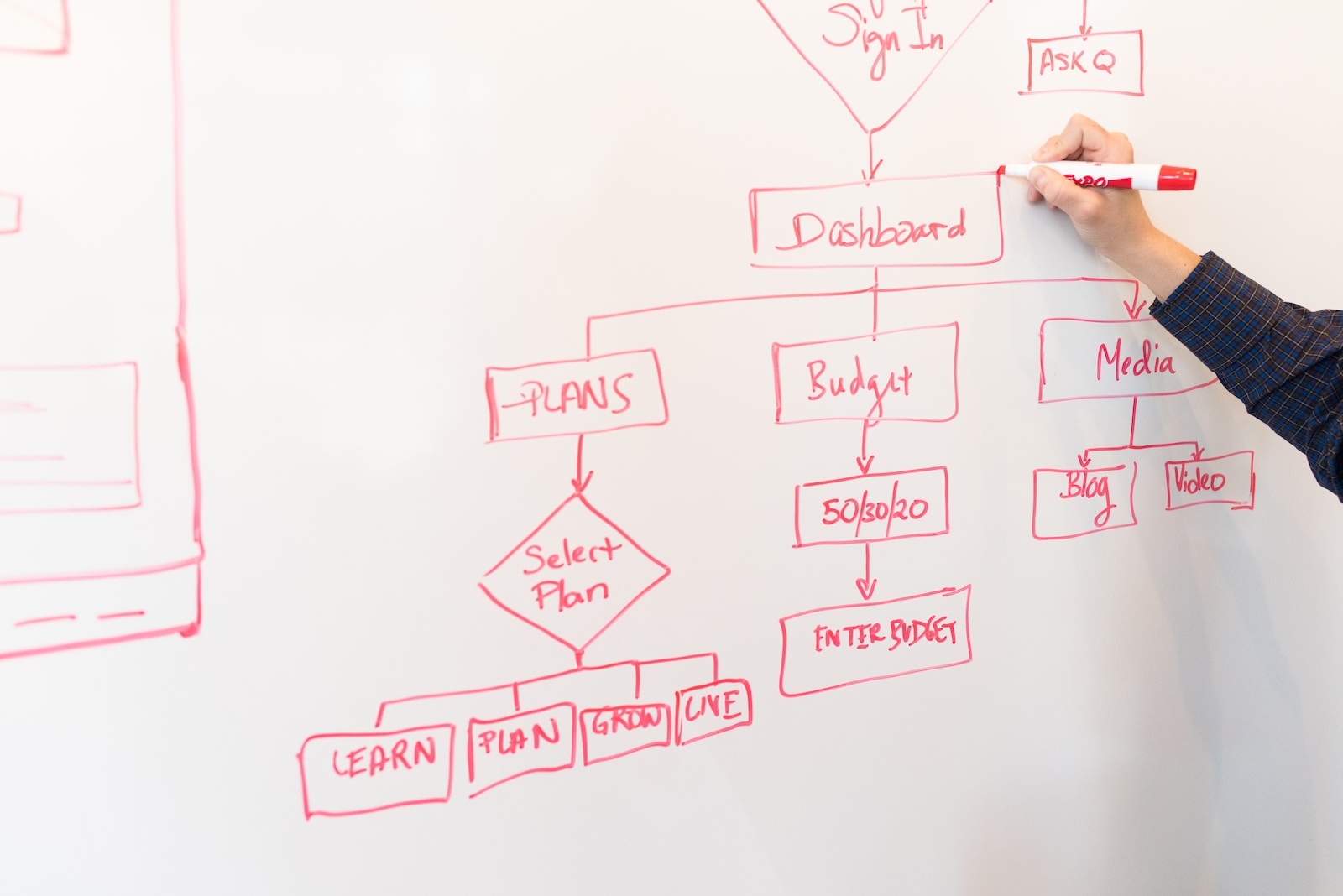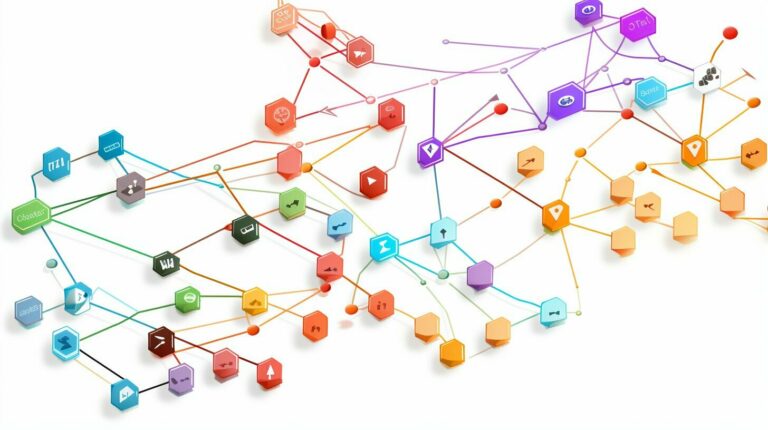Software engineering has evolved from monolithic applications to distributed systems, and microservices architecture has become increasingly popular for building large-scale applications. However, designing a complex microservices system can be challenging, as it requires breaking down the system into smaller services while ensuring they work cohesively together. This is where Domain-Driven Design (DDD) comes in.
DDD is a software development approach that focuses on understanding the domain and aligning the software design with it. By breaking down the system into bounded contexts and aggregates, DDD makes it easier to create modular and scalable microservices that are maintainable in the long run.
Key Takeaways:
- Domain-driven design is a software development approach that involves aligning the software design with the domain.
- Microservices architecture can be optimized using DDD principles.
- DDD facilitates the creation of modular and scalable microservices that are maintainable in the long run.
Understanding Domain-Driven Design (DDD)
Domain-Driven Design (DDD) is a software development methodology that emphasizes the importance of aligning software design with domain knowledge. It was first introduced by Eric Evans in his book “Domain-Driven Design: Tackling Complexity in the Heart of Software”, published in 2003. DDD has since gained widespread popularity due to its ability to create scalable, maintainable, and robust software systems.
Domain Modeling
At the core of DDD lies the concept of domain modeling. Domain modeling is a process that involves creating a representation of the real world within the software application. This representation consists of entities, value objects, and domain events, among others, which are encapsulated within bounded contexts. Through domain modeling, developers can create a shared understanding of the domain among all stakeholders, including business experts, developers, and users.
Domain modeling is an iterative process that involves continuous feedback and refinement. It requires a deep understanding of the domain and its complexities, as well as the ability to communicate effectively with stakeholders. The domain model must be concise, flexible, and adaptable to change, as the domain evolves over time.
Ubiquitous Language
Another key concept of DDD is the ubiquitous language. The ubiquitous language is a language that is shared by all stakeholders and is used to describe the domain model within the software application. The ubiquitous language ensures that all team members have a common understanding of the domain, which helps to reduce misunderstandings and improve communication.
The ubiquitous language is derived from the domain model and is used throughout the software development process. It is used to name classes, methods, and variables, as well as in user interfaces and documentation. The ubiquitous language helps to create a shared understanding of the domain and facilitates communication between stakeholders and developers.
“The most important part of domain modeling is not the diagrams and documentation. It’s the conversations that happen when creating them.” – Eric Evans
Bounded Contexts and Aggregates in DDD
Domain-Driven Design (DDD) emphasizes designing software that aligns with the business domain. As part of this process, defining clear boundaries between different domains, or bounded contexts, is essential for maintaining the integrity of the domain model. Each bounded context has its own language, concepts, and interactions, which are distinct from other contexts. This helps to prevent overlaps and conflicts between different parts of the system.
A domain aggregate is a collection of domain objects that are treated as a single unit under specific rules. Aggregates work in tandem with bounded contexts to manage complexity and consistency in the domain model. An aggregate root is the primary entity within an aggregate, and all operations on an aggregate are made through its root. This organization of domain objects allows for efficient manipulation of related concepts and avoids unwanted interactions with unrelated objects.
| Bounded Contexts | Aggregates |
|---|---|
| Define clear boundaries and interactions between domains | Organize related domain objects into collections that are treated as a single unit |
| Enable consistency and integrity within a bounded context | Allow for efficient manipulation of related domain objects |
| Encapsulate domain logic within a specific context | Prevent interactions with unrelated domain objects |
Implementing Entities and Value Objects in DDD
In Domain-Driven Design (DDD), entities and value objects are important building blocks for modeling the domain. Entities represent mutable, identifiable objects with a unique identity that can be tracked over time. On the other hand, value objects are immutable objects with no identity, often representing a concept or a specific state of an object.
Entities and value objects play a crucial role in defining the domain model and implementing business logic. However, designing and managing them effectively can be challenging, especially in complex domains.
Defining Entities in DDD
Entities are a fundamental concept in DDD, representing real-world objects with a unique identity that can be tracked over time. They often correspond to the nouns in the domain language and have attributes that determine their state.
When designing entities, it is essential to identify the attributes that uniquely define an entity and its identity. These attributes should remain consistent throughout the entity’s lifecycle and should not change without a deliberate action. Therefore, the identity of an entity should be established early in the design process.
Defining Value Objects in DDD
Value objects are immutable objects that represent a specific state or concept in the domain. They are often used to encapsulate a set of related attributes and provide behavior related to their state.
When designing value objects, it is crucial to ensure that they are truly immutable and can be shared among different entities without affecting their state. Moreover, they should have proper equality rules, so that two value objects with the same state are considered equal.
Value objects often represent concepts, such as currency, date, or address. They can also be used to represent complex objects that are created as a result of a calculation or a transformation, such as a total price or a summary.
“As a rule of thumb, if an object can be replaced with another object with the same attributes, it is a value object.”
Domain Events and Aggregate Roots in DDD
In Domain-Driven Design (DDD), domain events are used to capture significant changes in the domain and communicate them to other parts of the system. Domain events can be triggered by actions within an aggregate or by external events that affect the domain. By using domain events, we can ensure that all relevant parts of the system are notified of changes in the domain and take appropriate action.
Aggregate roots, on the other hand, are the top-level entities in an aggregate. They are responsible for maintaining consistency within the aggregate and enforcing its business rules. Aggregate roots are the only entities that can be accessed from outside the aggregate, and all access to other entities within the aggregate must go through the root.
Domain Events
Domain events are an essential part of Domain-Driven Design (DDD). They allow us to capture significant changes in the domain and communicate them to other parts of the system. Domain events can be triggered by actions within an aggregate or by external events that affect the domain. For example, creating a new order could trigger a “OrderCreated” event, which could then be used to update the inventory and notify the customer of the order.
By using domain events, we can decouple the different parts of the system and ensure that they are only aware of the parts of the domain that are relevant to them. This can help to improve scalability, modularity, and maintainability of the system.
Aggregate Roots
Aggregate roots are the top-level entities in an aggregate. They are responsible for maintaining consistency within the aggregate and enforcing its business rules. All access to other entities within the aggregate must go through the root, which ensures that the aggregate is in a consistent state at all times.
Aggregate roots act as a single point of contact for external entities, allowing them to interact with the aggregate without having to worry about its internal structure. This helps to simplify the design and implementation of the system and can improve its overall performance.
By implementing domain events and aggregate roots in Domain-Driven Design (DDD), we can create a more flexible and resilient system that is better aligned with the needs of the business. However, it is essential to understand the interactions between different aggregates and the potential risks of domain events to ensure that the system remains consistent and reliable.
Optimizing Microservices Architecture with DDD
Domain-Driven Design (DDD) provides a natural fit for microservices architecture. By focusing on designing software solutions that align with the domain, DDD helps to create microservices that are scalable, modular, and maintainable. Here are some ways DDD can be leveraged to optimize microservices architecture:
- Defining Bounded Contexts: Bounded contexts help to define clear boundaries between microservices. By identifying the specific context in which each microservice operates, developers can avoid overlapping functionality and reduce inter-service dependencies. This leads to more modular and scalable microservices.
- Capturing Domain Events: Domain events are an important part of the DDD paradigm. They help to capture and communicate significant changes in the domain. In microservices, capturing domain events can provide a way to coordinate functionality between services and maintain consistency across the system.
- Implementing Aggregate Roots: Aggregate roots are the entry points to aggregates and provide a way to maintain consistency within aggregates. In a microservices architecture, each service can act as an aggregate root, allowing for more autonomy and flexibility in the system.
By incorporating DDD into microservices architecture, developers can create a more cohesive and adaptable system. DDD helps to align the software design with the domain knowledge, which leads to software that is easier to understand, maintain, and scale.
Challenges and Best Practices for Implementing DDD in Microservices
While Domain-Driven Design (DDD) offers numerous benefits in optimizing microservices architecture, its implementation can pose some challenges. Here are some of the most common challenges and best practices to overcome them:
Challenge: Modularization
One of the biggest challenges in implementing DDD in microservices architecture is achieving seamless modularization. Dividing a complex domain model into smaller, self-contained modules can be a daunting task. However, modularization is crucial for achieving scalability and maintainability.
Best practice: Define clear bounded contexts and use them to create autonomous microservices. Each service should have a specific business capability and be responsible for a single aspect of the domain model. Use interface contracts to define the interactions between services.
Challenge: Inter-Service Communication
Microservices communicate with each other through APIs, which can be complex and dynamic. Ensuring seamless communication and maintaining consistency across the system can be challenging.
Best practice: Use asynchronous communication patterns such as event-driven or message-driven communication to reduce coupling and improve scalability. Implement APIs that support idempotent operations to ensure consistency and reliability.
Challenge: Maintaining Consistency Across Bounded Contexts
When dealing with multiple bounded contexts, ensuring consistency among them can be a significant challenge. Changes made in one context can have ramifications for another, which can lead to inconsistency.
Best practice: Implement domain events to capture significant changes in the domain model and communicate them across bounded contexts. Use aggregate roots to ensure consistency within aggregates. Implement eventual consistency to ensure data consistency across the system.
By implementing these best practices, organizations can overcome the challenges of implementing DDD in microservices architecture and realize its benefits in creating scalable and maintainable software systems.
Conclusion
In conclusion, implementing Domain-Driven Design (DDD) in microservices architecture can result in a more scalable, modular, and maintainable system. By aligning the software design with the domain knowledge and creating a common language between stakeholders and developers, DDD helps in designing microservices that cater to specific business needs.
Bounded contexts and aggregates help in defining clear boundaries and facilitating the organization and manipulation of domain objects. Entities and value objects, on the other hand, help in designing and managing domain objects effectively. Domain events and aggregate roots play a crucial role in capturing and communicating significant changes in the domain and maintaining consistency within aggregates.
However, implementing DDD in microservices also presents various challenges, such as modularization, inter-service communication, and maintaining consistency across bounded contexts. To overcome these challenges, it is crucial to follow best practices such as defining clear boundaries, using context maps, and adopting a choreography-based approach to inter-service communication.
In summary, Domain-Driven Design (DDD) can be leveraged to optimize microservices architecture, resulting in a more robust and flexible system. It provides a structured approach to software development that aligns with business needs and facilitates communication between stakeholders and developers. By adopting DDD principles, developers can design and implement microservices that are scalable, modular, and maintainable.







